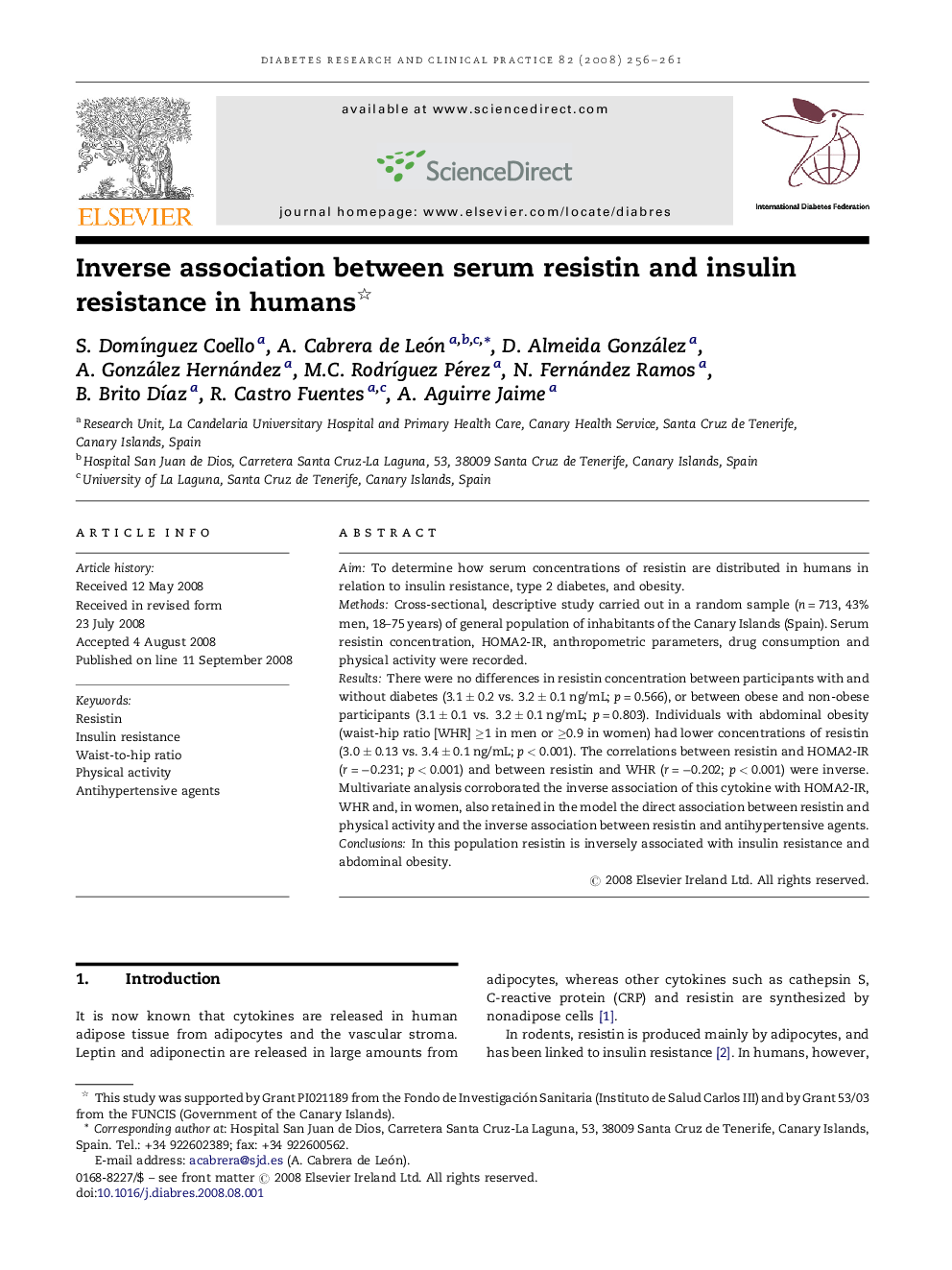| Article ID | Journal | Published Year | Pages | File Type |
|---|---|---|---|---|
| 2798227 | Diabetes Research and Clinical Practice | 2008 | 6 Pages |
AimTo determine how serum concentrations of resistin are distributed in humans in relation to insulin resistance, type 2 diabetes, and obesity.MethodsCross-sectional, descriptive study carried out in a random sample (n = 713, 43% men, 18–75 years) of general population of inhabitants of the Canary Islands (Spain). Serum resistin concentration, HOMA2-IR, anthropometric parameters, drug consumption and physical activity were recorded.ResultsThere were no differences in resistin concentration between participants with and without diabetes (3.1 ± 0.2 vs. 3.2 ± 0.1 ng/mL; p = 0.566), or between obese and non-obese participants (3.1 ± 0.1 vs. 3.2 ± 0.1 ng/mL; p = 0.803). Individuals with abdominal obesity (waist-hip ratio [WHR] ≥1 in men or ≥0.9 in women) had lower concentrations of resistin (3.0 ± 0.13 vs. 3.4 ± 0.1 ng/mL; p < 0.001). The correlations between resistin and HOMA2-IR (r = −0.231; p < 0.001) and between resistin and WHR (r = −0.202; p < 0.001) were inverse. Multivariate analysis corroborated the inverse association of this cytokine with HOMA2-IR, WHR and, in women, also retained in the model the direct association between resistin and physical activity and the inverse association between resistin and antihypertensive agents.ConclusionsIn this population resistin is inversely associated with insulin resistance and abdominal obesity.
